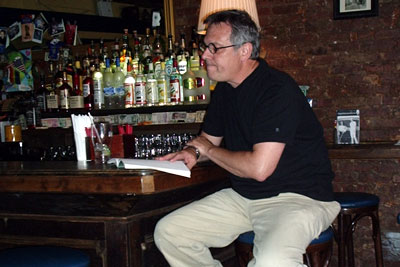Images sourced from google images:
Katherine N. Hayles writes in Writing Machines, "Zampanò suggests this chapter should be called "The Labyrinth", a title that makes explicit what is already implicit in typgraphy, that house of leaves mirrors the House on Ashtree Lane, both of which are figured as a labyrinth, a motif already embossed in black-on-black on the cover" (p. 122).
Shapes resembling "windows" from the house repeatedly come up in the book. On the left page, an object - seemingly a flower pot, is removed from the page.
On the literature stack exchange, Zyerah answers a question about whether House of Leaves would function well as an e-book by providing a number of examples of the importance of the book's physical presence, although they mention that prior knowledge of how the book is supposed to work may allow it to be read in e-book form later on.
One example that Zyerah brings up is visible on this page - the text often moves in different directions, which is very difficult to read on a computer screen. In this case, the text is read-able, but makes itself very difficult to read.




